Hello everybody,
We know you’re all eager for more information about Humankind, so we got another video for you this week: Reimagining Terrain!
To a historical strategy game like Humankind, terrain is an important game pillar that helps to immerse the player in the experience. From elevation to natural wonders, the terrain in Humankind is designed to improve this immersion while offering strategic challenges and opportunities.
Find out more in the video below:
We want you to be able to be fully immersed in this world. We want to push you to explore every valley, mountain range, or coastline. We want you to be able to find the perfect spot for your glorious city, your own little piece of paradise.
In order to do that we tried to create a rich and colorful, but also believable world, and we paid special attention to how all the elements blend into one another.
Elevation is a key aspect of terrain in Humankind. We want our players to develop a strong sense of the shape of the world, with flatlands, hilly areas, and mountain ranges feeling clearly distinct. The terrain in Humankind is fully three-dimensional, so each tile has an elevation, and depending on the surrounding tiles, you will find gentle slopes you can climb, or impassable cliffs that create challenges or opportunities for your exploration or battles.
For example, moving through forests or valleys will restrict your line of sight, so exploring from the high ground is a better option. Mountains and cliffs may get in the way of your explorers, but they can also serve as useful barriers in combat. Even if you cannot find any cliffs to control the shape of the battlefield, forests, rivers, and the high ground will have an impact on your battles.
A defensible position (Click through for full size)
Elevation by itself is not enough to create a sense of place and a believable world, however, as the world would be rather barren without appropriate vegetation. Each territory on the map has a temperature and humidity based on its location and height, and these are used to determine its biome. Territories near the equator may be tropical or deserts, those near the poles or high up in the mountains may be tundra or taiga, or a number of other biomes.
(Click through for full size)
These biomes allow us to control the spread of features like rocky terrain, forests, or fertile grassland to create a plausible landscape for each biome, be that a sandy desert, a boreal forest, or an expansive savannah. Furthermore, the biomes allow us to create believable visuals while keeping the gameplay effects of terrain persistent and readable: For example, forests may look different in tropical territories than in the temperate or subpolar climes, but it will always be a boon to your industry, while open grassland will allow you to feed your people.
The same terrain in a Tundra biome and a Savannah biome (Click through for full size)
Since we want the terrain to inform the player’s decisions, the different types of terrain offer different yields like Food or Industry, which will influence the growth of your cities.
To create areas of strategic interest and enhance the visual appeal of the map, we have also introduced various terrain features. Some of these will affect the basic resource yields of a tile, like an oasis in the desert or a geyser, while others will offer you access to strategic and luxury resources that are crucial to fueling your economy and military and at the same time create visual landmarks that help create a world as rich as possible.
Resource deposits and other terrain modifiers (Click through for full size)
Some terrain features like deep forests, long rivers, or large deserts will be notable landmarks, and if you are the first to discover them, you will get to name them. If you are really lucky, you may even discover one of the unique natural wonders, which will bring you Fame.
One of many natural wonders (Click through for full size)
We hope you enjoyed this closer look at terrain in Humankind!




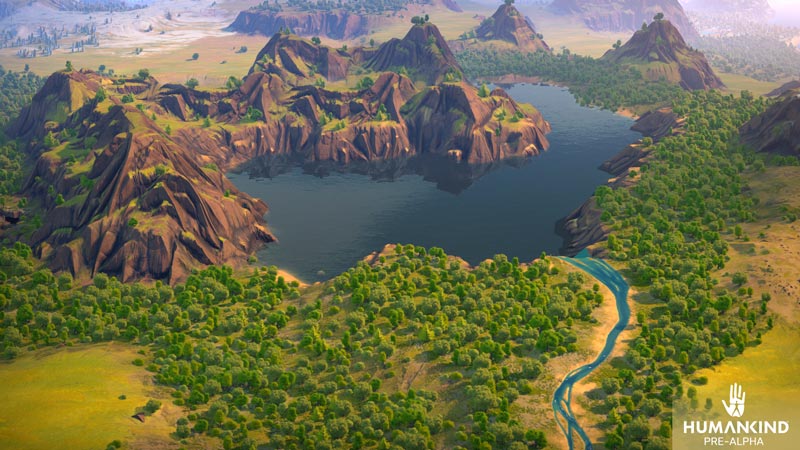
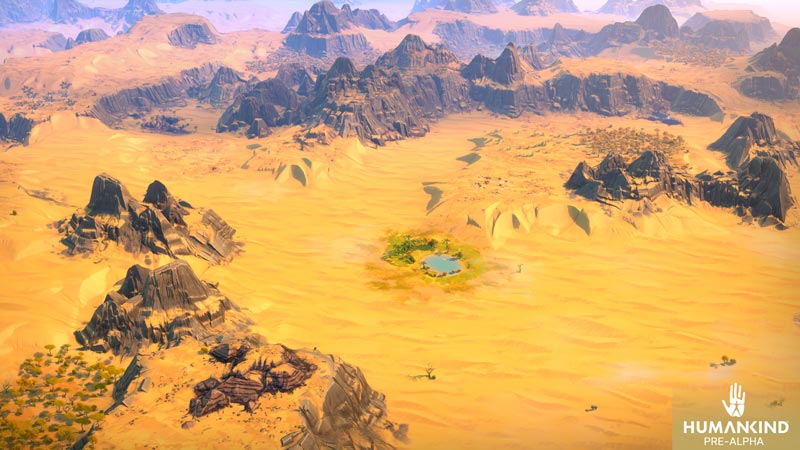
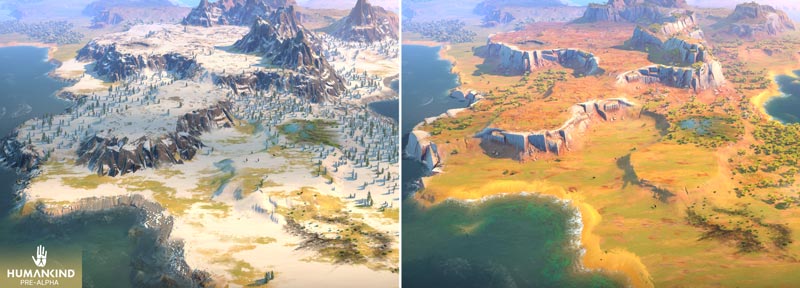
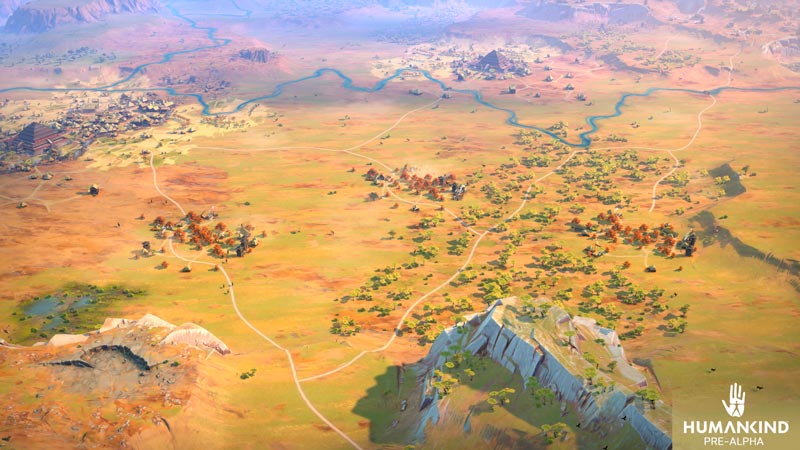
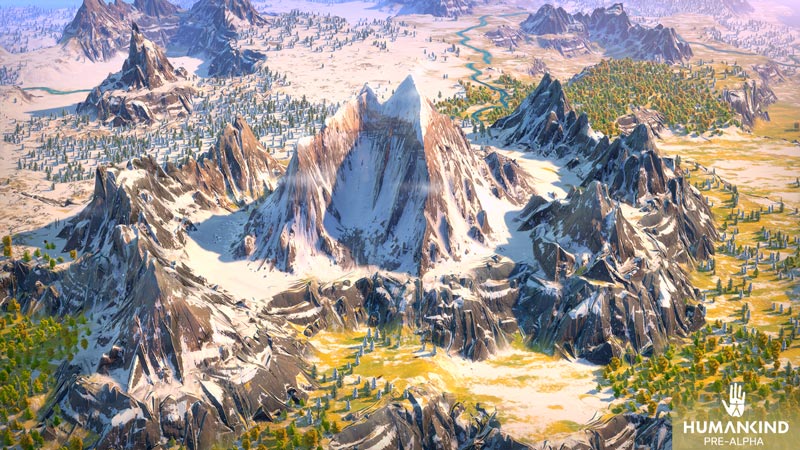




























.png)



















































































